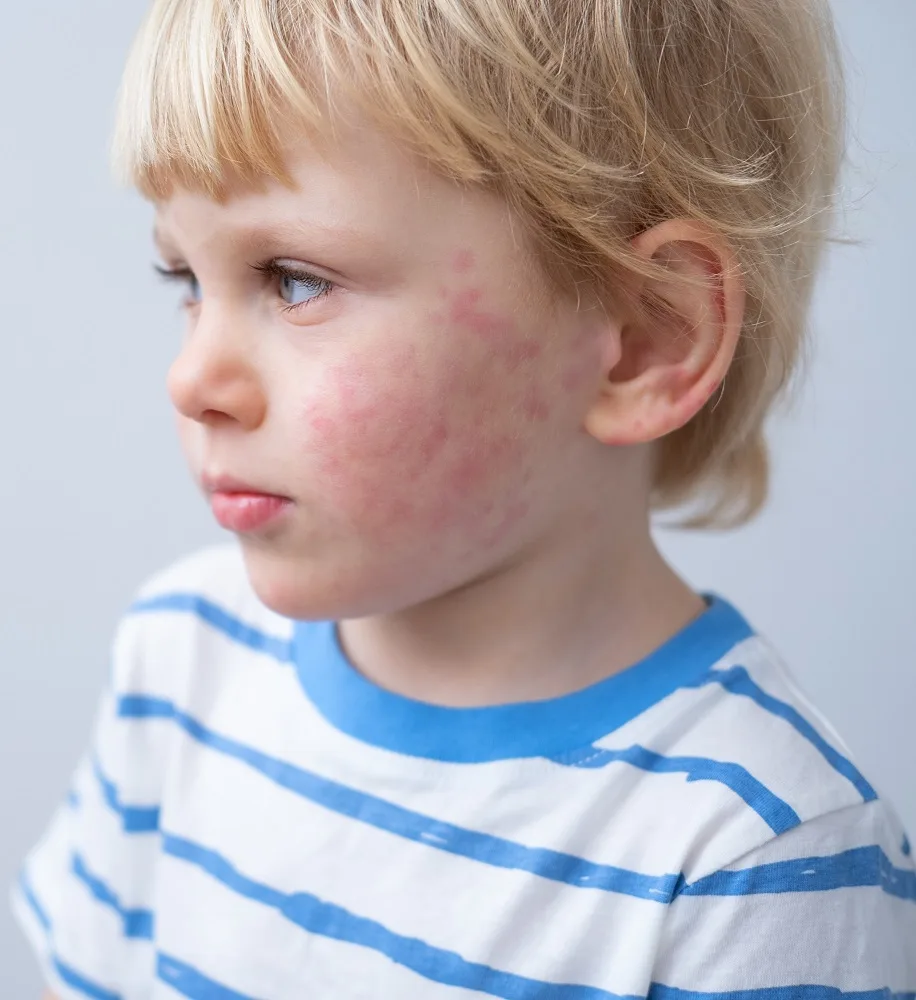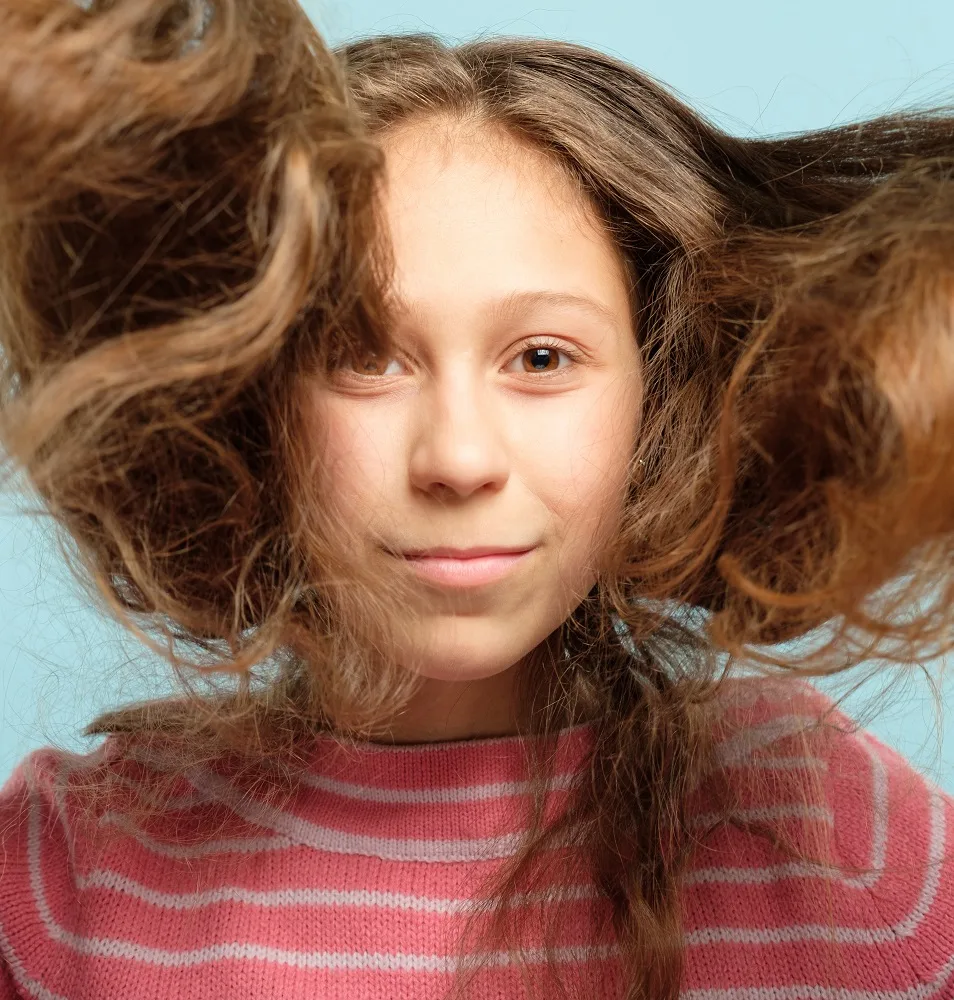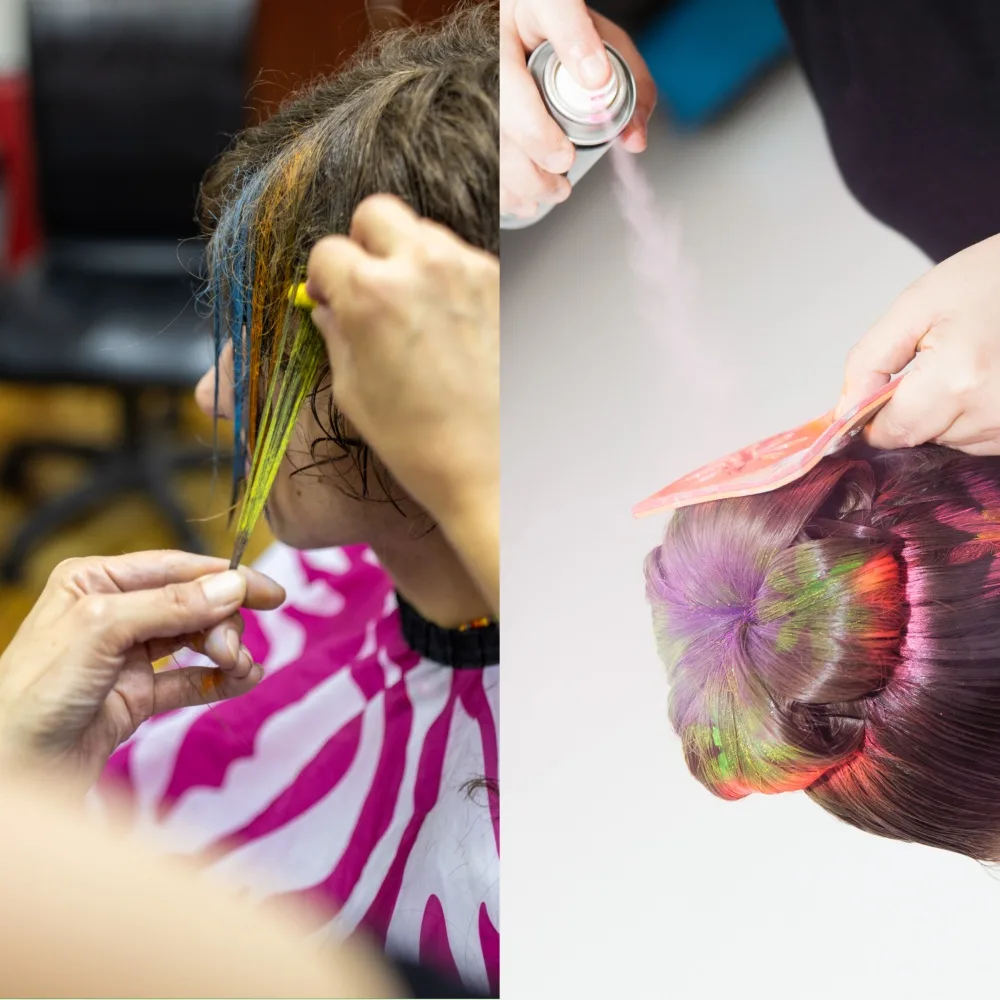If your child is creative and loves to have fun with their wardrobe and personal style, no doubt they have asked you at one point or another if they can dye their hair.
Of course, you don’t want to stifle their creativity, and you would love to earn some cool points, but it’s also important to consider the dangers of dyeing your child’s hair.
There are so many contrasting opinions on dyeing children’s hair. Some feel that dyeing children’s hair poses no additional risks than that of dyeing adults’ hair. Others feel that no child under a certain age should have their hair dyed. This article quotes reputable sources so that you can be accurately informed about the risks of dyeing your child’s hair.
In this article, we will discuss two main dangers of dyeing children’s hair. After reading the information below, you will be able to make an informed decision on whether or not to dye your own child’s hair.
Dangers of Dyeing Children’s Hair
Hair Dye Can Cause Severe Reactions in Children

According to an article published by BBC News,
“Hair dyes contain chemicals that in rare cases can cause severe, even life-threatening, allergic reactions.”
– BBC News
The National Capital Poison Center backs up these claims, stating that even if hair dye is used properly, it can cause allergic reactions. It states:
“Up to 25 different ingredients in hair dyes can cause harmful skin effects. Contact with skin can cause irritation including redness, sores, itching, and burning. Occasionally, allergic reactions occur and involve swelling of the face and neck that causes difficulty breathing.”
– National Capital Poison Center
If adults can have serious allergic reactions to hair dye, you can be sure that children, who have more sensitive scalps, are even more susceptible to these allergic reactions. This is why, according to the above-quoted article on BBC News,
“Hair dye manufacturers say they are not intended for anyone under the age of 16. The European Commission insists that this warning should be put on all hair dye packaging.”
– BBC NEWS
It is clear that, if the manufacturers of the hair dye state that it is unsafe for children under 16, we should take this precaution seriously.
What if My Child Doesn’t Have Any Known Allergies?
Even if your child doesn’t have any known allergies, they could still be allergic to any one of the numerous chemicals present in hair dye. If they have never been directly exposed to hair dye, you can’t know for sure that they are not allergic to any of its ingredients.
What if I Protect My Child’s Scalp and Only Use the Dye on Their Hair?
If you are certain that your child is not allergic to the hair dye you are going to use, (this can only be determined by doing a spot check on their skin), still be wary. You may be confident that, by using a scalp barrier like Vaseline, you will ensure that they don’t experience any negative side effects.
This may be true in some cases, so it is up to your judgment as the parent. However, keep in mind that prolonged and frequent exposure to chemicals can cause allergies to develop over time.
Hair Dye Can Damage Children’s Hair

The National Capital Poison Center states that “Permanent dyes cause chemical changes that increase the penetration of the product into the hair, bleach the natural melanin, and create color molecules that get trapped inside the shaft. These chemical changes can damage the hair.”
This is true of adults, but even more so for children. Because children tend to have finer and more delicate hair, their hair is more easily damaged.
When you apply chemical dye to hair, it opens the cuticle of the hair, and deposits color. Some types of dye can also penetrate into the core of the hair and lift color out of it.
Either way, chemical hair dye has to penetrate through the cuticle of the hair, which can cause dryness, breakage, and excess frizz. For a child with delicate, fine hair, applying chemical dye to their hair could damage it beyond repair.
Keep in mind that children’s hair also changes drastically during childhood and adolescence. It may change color, density, and even texture. Rather than altering the chemistry of their hair further by putting dye on it, it is simply best to allow their hair to develop and change naturally.
Are All Hair Dyes Bad for My Child’s Hair?
Permanent hair color and bleach are especially damaging to hair, because they penetrate into the core of the hair and alter its chemistry. Demi-permanent colors are slightly less damaging, but they still open the cuticle of the hair and cause some damage.
The least damaging type of hair dye would be temporary dyes that wash out after one use. These simply coat the hair and do not open the cuticle of the hair or chemically alter it.
What Hair Dyes Are Safe to Use on My Child’s Hair?

There are plenty of fun alternatives to chemical dyes when it comes to dyeing your child’s hair. All of these alternatives are temporary, which is honestly great for kids because as we all know, they change their minds frequently.
With these options, you will be able to promote your child’s creativity without putting their health and hair at risk.
- Hair Chalk: Add some vibrant, temporary streaks to your kid’s hair with this powdery hair color.
- Hair Color Spray: Hair color spray is easy, fun, and perfect for “crazy hair day” at school. Just make sure to apply it in a ventilated area.
- Colorful Clip-In Extensions: Vibrant clip-in extension pieces are a great option to add color to your child’s hair without the messy cleanup.
In Summary
Although dyeing your kid’s hair may seem like a fun experience, and can earn you some cool parent points, it is important to be aware of the dangers associated with dyeing children’s hair. The chemicals in hair dye can damage their hair and even cause severe allergic reactions.
That is why it’s best to use a fun temporary color! Trust me, you will still earn the cool points, but this way, you will be protecting your child from unneeded discomfort, and giving yourself peace of mind.
Key Things to Know:
- Hair dye can cause severe allergic reactions, especially in children, because they have more sensitive skin and scalps.
- Hair salons should not dye a child’s hair if they are under the age of 16.
- Children’s hair is more susceptible to damage, and therefore it can be severely damaged by the chemicals in hair dye.
- To temporarily dye your child’s hair, use hair chalk, hair color spray, or colorful clip-in hair extensions.
